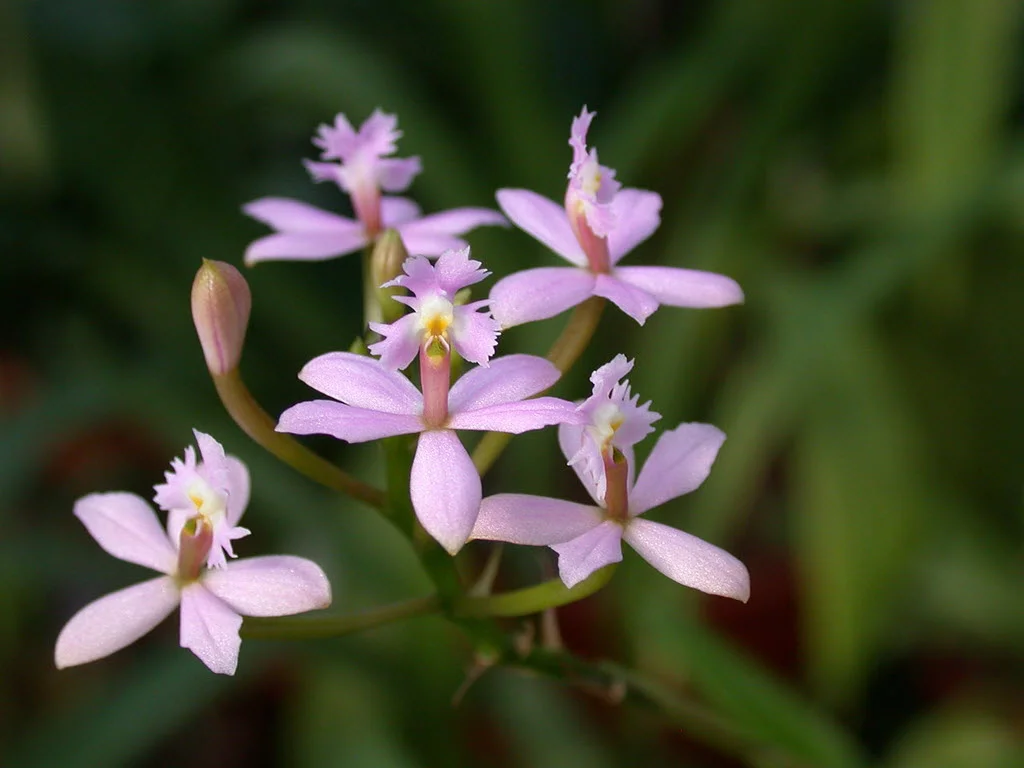Table of Contents
Pronunciation: re-STREP-ee-ah
Introduction
Restrepias Orchids have the unique ability to protect themselves from sunburn if they get too much light. Their leaves will turn from green to reddish brown, and this can prevent damage and sunburn.
Restrepia purpurea
This species can bloom year round with the right growing conditions, and their flowers vary from orange to reds, and some have stripes. The lateral petals are very narrow and resemble antennae with slight bulges at the tips, while the lateral sepals all fuse together to form one large petal.
Temperature
As these orchids bloom high up in the Andes, they don't tolerate hot temperatures very well. Ideally, your daytime temperatures should stay between 65°F and 68°F (18°C and 20°C) at the maximum. Any warmer and the plant will start to show signs of distress.
The nighttime temperatures should drop down between 50°F and 55°F (10°C to 13°C) for these orchids to thrive. If you can maintain this temperature and their ideal humidity levels, your orchid can bloom year-round.
Light
They grow best in shady conditions, and if you have them in an area with direct sunlight, you should add netting over them to break up the sunbeams. If you notice that your plant's leaves are turning a reddish-brown color, it means that they're getting too much sun and you should adjust it if possible.
You can slowly work them up to being in more lighted conditions, but you'll have to adjust the temperature accordingly. The more light that this orchid gets, the cooler the surrounding temperature needs to be to ensure the proper growth environment.
Water and Humidity
Restrepias are more forgiving than some other orchid species when it comes to watering. They do like to stay moist and not dry out completely between watering, but they'll live if you forget and let them completely dry out once or twice without incident.
As they grow best in cooler temperatures, you may only need to water them once every two or three days. However, if your temperatures are higher, you'll need to increase your watering schedule accordingly to keep them moist.
They do like higher humidity levels than a lot of orchid species, and you should try and keep your humidity levels between 70% and 100% year-round. The closer you can get to 100% humidity, the happier your orchids will be.
Feeding
You'll want to feed your orchid every other week with a well-balanced fertilizer. You should never apply this fertilizer full strength, and you want to dilute it to at least one-half strength if not more. You can achieve this by dissolving one teaspoon of fertilizer into one gallon of water.
If you notice that your plant isn't growing as it should be, you can increase feedings to once a week until you see better growth. They do grow at a rapid pace year-round, and they can get quite large.
Potting
These orchids do well in pots and mounted on slabs of bark. However, it is more difficult to keep them moist when they're growing on slabs of bark, and they grow very rapidly, so you have to keep the size of your mounting material in mind when you first plant them.
For growing your orchids in pots, you want a good mix of light and breathable potting medium that retains water. You can use a mix of medium-to-fine grade fir bark and New Zealand sphagnum moss as their potting medium. You want to transplant these orchids every two years to refresh their growing medium, and you should repot them in the early spring months for best results.
Videos
Roger's Orchids repots his new Restrepias and discusses orchid care tips at the same time. This is very informative if you're serious about growing these orchids.
From unexpected protective behavior to mind-boggilng pollination methods, orchids are truly fascinating. Discover even more when you read through our comprehensive list of the different types of orchids.
See More Orchid Species












